ARTICLE
A Newly Discovered Blake Book: William Blake’s Copy of Thomas Taylor’s The Mystical Initiations; or, Hymns of Orpheus (1787)
THERE is a book in the collection of the Bodleian Library at Oxford University that appears to contain marginalia written by the poet and painter William Blake. These marginalia were discovered several years ago by one of the authors of this paper during graduate research.1↤ 1. They were first noticed by Phil Cardinale in June 2001 during initial research for an Oxford English literature dissertation on Virgil and the romantics. The project of identifying, authenticating, and publishing the annotations was postponed until his academic studies were complete. His brother, Joseph Cardinale, a visiting student at Oxford when the marginalia were discovered, assisted with research and drafting, and later revived the project and helped bring it to fruition. The book is a first edition, 1787 copy of Thomas Taylor’s The Mystical Initiations; or, Hymns of Orpheus (Bodleian call number Arch. H e.181). Its author, sometimes referred to as “Taylor the Platonist,” was the first to translate the complete works of Plato and Aristotle into English and has long been considered a Blake associate.
Upon the discovery of the marginalia, their style and content prompted a comparison with a facsimile of Blake’s prose manuscript An Island in the Moon (c. 1784-85). The handwriting is strikingly similar. The annotator of Mystical Initiations left no autograph. The book contains one long and two short handwritten comments, as well as numerous passages underscored by the same pen. The comments and highlighted passages fit what is known of Blake’s intellectual interests during the period in which he composed Songs of Innocence and of Experience (c. 1787-94). If this attribution is accepted, it will shed further light on the artist’s association with Taylor and likely confirm a suspected source for Blake’s poem “Ah! Sun-Flower” (see transcript, pp. 75-76). An especially heavily marked page may also record Blake’s receptivity to Taylor’s assertion that “in the universe, there is one harmony though composed from contraries” (transcript, p. 70).
This article argues for attributing to Blake the marginalia in the Bodleian’s copy of Mystical Initiations. Part I describes the book and accounts for its provenance. Part II transcribes the marginalia. A third section delineates Blake’s relationship with Taylor. Part IV compares the marginalia with specimens of Blake’s handwriting, and Part V offers initial ideas about how these annotations might correlate with Blake’s known thought.
I. Description and Provenance
The Bodleian copy is an octavo-sized, 227-page book bound in brown calfskin. It is in good condition. Gilt letters on the spine read “HYMNS / OF / ORPHEUS / TAYLOR / 1787”, and a book stamp inside the front cover marks its entrance into the Bodleian collection on 29 September 1928. A librarian’s pencil-written note also inside the front cover records that the book was “Bt. from Quaritch” (Bernard Quaritch, bookseller of London, est. 1847). The purchase is traceable to the following listing in Bernard Quaritch’s Catalogue, Number 414 (London, February 1928):2↤ 2. P. 23, item 221. The book is listed in the catalogue’s classics section, which is described as “including a choice selection ... from the library of the late Lt. Col. Sir George Holford” (18). However, this copy of Mystical Initiations must have a different source, as it is not listed in Sotheby’s 1927-28 Holford estate auction catalogues.
ORPHEUS. The Mystical Initiations, or Hymns of Orpheus, translated from the original Greek: With a preliminary Dissertation on the Life and Theology of Orpheus; by THOMAS TAYLOR. Post 8vo., newly bound in calf Printed for the author, 1787 £2, 2sThe October 1927 issue of Quaritch’s Catalogue (number 410) advertises several of Taylor’s books without including Mystical Initiations, hinting that the bookseller may have acquired the book in the intervening months. The description “newly bound in calf” implies that Quaritch rebound the volume. In response to an inquiry, the bookseller searched its records to attempt to trace the original supplier. It appears, however, that the firm did not retain a bill of sale due to the relatively low selling price of the item.3↤ 3. The authors are grateful to Ted Hofmann, a director at Bernard Quaritch, who searched the firm’s records shortly after the marginalia were discovered and concluded that a bill of sale had not been retained.
According to the August 1788 issue of the Monthly Review, Mystical Initiations originally sold for five shillings, “sewed,” with its leaves loosely stitched so that buyers could have their copies bound as individual taste and funding allowed.4↤ 4. Monthly Review 79 (Aug. 1788): 133. The title page states that the volume was originally distributed by “T. Payne and Son, at the Mews-gate; L. Davis, Holborn; B. White and Son, Fleet-street; and G. Nichol, Strand.” Since this was Taylor’s first philosophical work it can be assumed that the print run was modest, almost certainly fewer than 1,000 begin page 85 | ↑ back to top copies. In 1792 the book reached a second printing under the shortened title The Hymns of Orpheus.
If at some point the Bodleian copy belonged to Blake, it is unclear who, owned the book immediately prior to its acquisition in 1918. The artist died in 1827, leaving his property to his wife, Catherine. On her death four years later, Blake’s belongings fell into the possession of Frederick Tatham, who over the course of more than thirty years sold off or disposed of the artist’s legacy piece by piece. In 1864 Tatham recalled that Blake ↤ 5. Letter to Francis Harvey (8 June 1864), quoted in G. E. Bentley, Jr., Blake Records, 2nd ed. (New Haven: Yale University Press, 2004) [hereafter BR(2)] 57fn.
had a most consummate knowledge of all the great writers in all languages. To prove that, I may say that I have possessed books well thumbed and dirtied by his graving hands, in Latin, Greek, Hebrew, French, and Italian, besides a large collection of works of the mystical writers, Jacob Behmen, Swedenborg, and others. His knowledge was immense ....5During the years that he kept Blake’s possessions, Tatham became an adherent of the Christian minister Edward Irving and it has been said that, convinced by some of that sect that Blake’s works were satanic, he destroyed many of the artist’s original manuscripts, blocks, plates, and drawings.6↤ 6. G. E. Bentley, Jr., The Stranger from Paradise: A Biography of William Blake (New Haven: Yale University Press, 2001) 446. Blake’s library presumably suffered similar cleansing, though many of the books survived and have since come to light. Bentley’s Blake Records Supplement lists fifty-one books known to have been in the poet’s collection, of which twenty-one have been traced.7↤ 7. G. E. Bentley, Jr., Blake Records Supplement (Oxford: Clarendon Press, 1988) [hereafter BRS] 124-29. BRS rather than the more recent BR(2) is cited here because the latter does not contain an appendix on Blake’s library. Blake Books Supplement (Oxford: Clarendon Press, 1995), in Part V: Books Owned by Blake, lists three more titles, and reveals that another in BRS (Homer, #26) has been traced. Among that number fifteen contain annotations, which are reprinted in Erdman’s Complete Poetry and Prose.8↤ 8. David V. Erdman, ed., The Complete Poetry and Prose of William Blake, newly rev. ed. (New York: Anchor-Random House, 1988) [hereafter E] 583-670. Mystical Initiations is not listed in Blake Records Supplement, but the critical work of George Mills Harper, Kathleen Raine, and others has established a likelihood that the poet had access to this book in the late 1780s and early 1790s.9↤ 9. Harper, The Neoplatonism of William Blake (Chapel Hill: University of North Carolina Press, 1961); Raine, Blake and Tradition, 2 vols. (Princeton: Princeton University Press, 1968).
In 1998 a copy of Blake’s 1809 Chaucer prospectus was found in the possession of the Bodleian Library, where it had lain unrecorded for 165 years.10↤ 10. J. B. Mertz, “An Unrecorded Copy of Blake’s 1809 Chaucer Prospectus,” Blake 32.3 (winter 1998-99): 73-74. This discovery makes it plausible that another item connected to Blake could have remained undetected in the same library.
II. Transcription of the Marginalia
Mystical Initiations is presented in three parts: a preface (iii- xii); “A Dissertation on the Life and Theology of Orpheus” (1-106); and a translation from ancient Greek of the Orphic hymns (107-227). The “Dissertation” is subdivided into three sections: an account of Orpheus’s life (1-12), an interpretation of his theology (12-84), and an introduction to his hymns (85-106).
The annotator of the Bodleian copy wrote marginalia on pages vii (see illus. 1 and 3), viii (illus. 2), and 69, corrected printer’s errors on pages 89 and 225, and underscored numerous passages, primarily in the first two sections of Taylor’s “Dissertation.” All the handwriting and most of the underlining in the book appear in orange-brown ink; some underlining and markings are in a darker, brown-black shade of ink. Pencil marks appear on pages 14, 30, 44, 68, 70, and 97.
The transcription that follows generally gives text on the left side and explanatory details on the right. For ease of reading, instances of the long “s” have been changed to the modern short “s.” As much of Taylor’s context has been reproduced as space allows, but necessarily only annotated and underlined sections are given. The full text of the 1787 edition may be consulted through Eighteenth Century Collections Online <http://gdc.gale.com/products/eighteenth-century-collections-online> (subscription required). Alternatively, Thomas Taylor the Platonist: Selected Writings, ed. Kathleen Raine and George Mills Harper (Princeton: Princeton University Press, 1969), reproduces the 1792 reprint. Readers should note that the text of The Mystical Hymns of Orpheus (1824, a second edition), reproduced in Hymns and Initiations, volume 5 of the Thomas Taylor Series (Frome: Prometheus Trust, 1994), differs substantially from that of 1787 and 1792.
( iii )
PREFACE.
THERE is doubtless a revolu-
tion in the literary, correspond-
ent to that of the natural world.
The face of things is continually
changing; and the perfect, and per-
petual harmony of the universe, sub-
sists by the mutability of its parts.
In consequence of this fluctuation,
different arts and sciences have flou-
rished at different periods of the
world: but the complete circle of
human
( iv )↤ * The annotator’s ink is orange brown.
human knowledge has I believe, never
subsisted at once, in any nation or age.
begin page 86 | ↑ back to topbegin page 87 | ↑ back to top begin page 88 | ↑ back to topWhere accurate and profound re-2b. Thomas Taylor, The Mystical Initiations; or, Hymns of Orpheus (London, 1787), detail of p. viii. The Bodleian Libraries, University of Oxford (Arch. H e.181).[e]
searches, into the principles of things
have advanced to perfection; there,
by a natural consequence, men have
neglected the disquisition of particu-
lars: and where sensible particulars
have been the general object of pur-
suit, the science of universals has
languished, or sunk into oblivion and
contempt.
Thus wisdom,* the object of all
true philosophy, considered as explor-
ing the causes and principles of things,
flourished in high perfection among
the Egyptians first, and afterwards
in Greece. Polite literature was the
pursuit of the Romans; and experi-
mental enquiries increased without
end,
end, and accumulated without order,
are the employment of modern phi-
losophy. Hence we may justly con-
clude, that the age of true philosophy
is no more. In consequence of very
extended natural discoveries, trade
and commerce have increased; while
abstract investigations, have necessarily
declined: so that modern enquiries,
never rise above sense; and every
thing is despised, which does not in
some respect or other, contribute to
the accumulation of wealth; the gra-
tification of childish admiration; or
the refinements of corporeal delight.
The author of the following transla-
tion, therefore, cannot reasonably ex-
pect, that his labours will meet with
the approbation of the many: since
these Hymns are too ancient, and
too
( vi )↤ * See illus. 1 and 3.
too full of the Greek philosophy, to
please the ignorant, and the sordid.
However, he hopes they will be ac-
ceptable to the few, who have drawn
wisdom from its source; and who
consider the science of universals, as
first in the nature of things, though
last in the progressions of human un-
derstanding.The translator has adopted rhyme,
not because most agreeable to gene-
ral taste, but because he believes it
necessary to the poetry of the English
language; which requires something
as a substitute, for the energetic ca-
dence, of the Greek and Latin Hex-
ameters. Could this be obtained by
any other means, he would imme-
diately relinquish his partiality for
rhyme,
There is no instance of a poet writing good Eng.*↤ * See illus. 2. “though” is double underlined, and the annotator replaces it with the word “because.” (quite faded) in the left margin. “words” is also underscored twice.
Blank verse who has not also written good
Rhyme: but many have written good rhyme
( vii )
who have shewn no capability of writing. good
Blank verse .
rhyme, which is certainly when well
executed, far more difficult than blank
verse, as the following Hymns must
evince, in an eminent degree.And, here it is necessary to ob-
serve, with respect to translation, that
nothing is more generally mistaken
in its nature; or more faulty in its
execution. The author of the Letters
on Mythology, gives it as his opi-
nion, that it is impossible to translate
an ancient author, so as to do justice
to his meaning. If he had confined
this sentiment, to the beauties of
the composition, it would doubtless
have been just; but to extend it,
to the meaning of an author, is to
make truth and opinion, partial and
incommunicable. Every person, in-
deed,
( viii )
deed, acquainted with the learned lan-
guages, must be conscious how much
the beauty of an ancient author ge-
nerally suffers by translation, though*
undertaken by men, who have devot-
ed the greatest part of their lives to
the study of words alone. This failure,
which has more than any thing con-
tributed to bring the ancients into con-
tempt with the unlearned, can only
be ascribed to the want of genius in
the translators: for the sentiment of
Pythagoras is peculiarly applicable to
such as these; that many carry the begin page 89 | ↑ back to top Thyrsis, but few are inspired with
the spirit of the God. But this ob-
servation is remarkably verified, in
the translators of the ancient philoso-
phy, whose performances are for the
most part without animation; and con-
sequently ....
...
[There are no further marked passages in the preface.]
[1]
A
DISSERTATION
ON THE
Life and Theology of ORPHEUS.
SECT. I.
THE great obscurity and uncertainty
in which the history of Orpheus is
involved, affords very little matter for
our information; and even renders that
little, inaccurate and precarious. Upon
surveying the annals of past ages, it
seems that the greatest geniuses, have
been subject to this historical darkness;
as is evident in those great lights of an-
tiquity, Homer and Euclid, whose writ-
ings indeed enrich mankind with per-
petual
( 2 )↤ * “muse” and “flowed” are underlined twice.
petual stores of knowledge and delight;
but whose lives are for the most part
concealed in impenetrable oblivion. But
this historical uncertainty, is no where so
apparent, as in the person of Orpheus;
whose name is indeed acknowledged and
celebrated by all antiquity (except per-
haps Aristotle alone); while scarcely a
vestige of his life is to be found amongst
the immense ruins of time. For who has
ever been able to affirm any thing with
certainty, concerning his origin, his age,
his parents, his country, and condition?
This alone may be depended on, from ge-
neral assent, that there formerly lived a per-
son named Orpheus, whose father was Œa-
grus, who lived in Thrace, and who was the
son of a king, who was the founder of
theology, among the Greeks; the insti-
tutor of their life and morals; the first of
prophets, and the prince of poets; himself
the offspring of a Muse; who taught the
Greeks
( 3 )
Greeks their sacred rites and mysteries, and
from whose wisdom, as from a perpetual
and abundant fountain, the divine muse*
of Homer, and the philosophy of Pytha-
goras, and Plato, flowed; and, lastly, who
by the melody of his lyre, drew rocks,
woods, and wild beasts, stopt rivers in
their course, and even moved the inexor-
able king of hell; as every page, and all
the writings of antiquity sufficiently evince.
Since thus much then may be collected
from universal testimony, let us pursue
the matter a little farther, by investigat-
ing more accurately the history of the
original Orpheus; with that of the great
men who have, at different periods, flou-
rished under this venerable name.
...
[The next few marked passages are in a brown-black ink; this may or may not be the same annotator. The orange-brown ink returns at p. 69.]
( 4 )↤ * The annotator has made a long dark X in the margins.
...
Our poet, according to fabulous tradi-
tion, was torn in pieces by Ciconian
women:
( 5 )↤ The annotator again has made a long X beside this passage.
women: on which account, Plutarch af-
firms the Thracians were accustomed to*
beat their wives, that they might revenge
the death of Orpheus. Hence, in the vision
of Herus Pamphilius ....
...
( 6 )begin page 90 | ↑ back to top
having recalled Eurydice to life, and not
being able to detain her, he destroyed
himself; nightingales building their nests,*
and bringing forth their young upon his
tomb; whose melody, according to re-
port, exceeded every other of this spe-
cies. Others again ascribe his laceration,
to his having celebrated every divinity
except Bacchus ....
...
( 9 )
...
siderable space of time. Afterwards, when
Neanthus, the son of Pittacus the tyrant,
found that the lyre drew trees and wild
beasts with its harmony, he earnestly
desired its possession; and having cor-
rupted the priest privately with money, he
took the Orphean lyre, and fixed another
similar to it, in the temple. But Nean-
thus considering that he was not safe in
the city in the day time, departed from
it by night; having concealed the lyre in
his bosom, on which he began to play.
But as he was a rude and unlearned youth,
he confounded the chords; yet pleasing
himself with the sound, and fancying he
produced a divine harmony, he consider-
ed himself as the blessed successor of Or-
pheus.
( 10 )
pheus. However, in the midst of his
transports, the neighbouring dogs, roused
by the sound, fell upon the unhappy harper
and tore him to pieces.
...
[On p. 12 “SECT. II” begins, moving the discourse from Orpheus’s life to his theology.]
↤ * This mark is in a lighter gray shade that may be pencil. ↤ * Brown-black ink here and below.( 14 )
...
The belief indeed of the man, who looks
no higher than sense, must be necessarily*
terminated by appearances. Such a one
introduces a dreadful chasm in the uni-
verse; and diffuses the deity through the*
world like an extended substance; divid-
ed with every particle of matter, and
changed into the infinite varieties of sen-
sible forms. But with the ancient philoso-
pher, the deity is an immense and per-
petually exuberant fountain; whose streams
originally filled the continually replenish
the
( 15 )↤ * “soul” is underlined boldly.
the world with life. Hence the universe
contains in its ample bosom all general
natures; divinities visible and invisible ....
...
( 19 )
...
And hence we con-
clude that there is another certain nature
exempt from the passivity and imperfection
of bodies, existing not only in the heavens,
but in the ever-changing elements, from
which the motion of bodies is prim-
rily derived. And this nature is no
other than soul,* from which animals de-
rive their life and motive power; and
which even affords an image of self-motion
to the unstable order of bodies.If then the self-motive essence is more
ancient than that which is moved by an-
other, but soul is primarily self-motive,
hence soul must be more ancient than
body; and all corporeal motion must be
the
( 20 )
the progeny of soul, and of her inherent
energy. It is necessary, therefore, that the
heavens, with all their boundless contents,
and their various natural motions (for a
circular motion, is natural to such bodies),
should be endued with governing souls,
essentially more ancient than their revolv-
ing bodies. According to the Platonic philosophers ....
...
( 21 )
...
Because it is also
necessary that the soul, essentially rational,
should receive intellect by participation,
and that intellectual energy should be of
two
( 22 )
two kinds; one primarily subsisting in the
divine intellect; but the other subsisting
secondarily in its offspring soul. You
may add too, the presence of intellectual
illumination in body, which is received
in as great perfection as its unstable and
obscure nature will admit. For how is it
possible that the celestial orbs should be
for ever circularly moved in one definite
order, preserving the same form, and the
same immutable power, unless they par-
ticipated of an intellectual nature. For
soul is indeed the constant supplier of mo- begin page 91 | ↑ back to top tion; but the cause of perpetual station,
of indentity and uniform life, reducing
unstable motion to a circular revolution,
and to a condition eternally the same,
must be more ancient than soul.
...
( 25 )
...
In consequence of this reasoning, Or-
pheus filled all things with Gods, subor-
dinate to the demiurgus of the whole
Δημιουργῷ, every one of which performs the
office destined to his divinity, by his supe-
riour
( 26 )
riour leader. Hence according to his
theology there are two worlds, the intel-
ligible and the sensible. Hence too his
three demiurgic principles: Jovial, Dio-
nysiacal, and Adonical, Δΐιος , Διονυσιακὴ,
Αδωναϊκὴ, from whence many orders and
differences of Gods proceed, intelligi-
ble ..., intellectual, super-mundane, mun-
dane, celestial, authors of generation.
And among these some in the order of
guardian, demiurgic, elevating and com-
prehending Gods; perfecters of works,
vivific, immutable, absolute, judicial,
purgative, &c. and besides these to each
particular divinity, he added a particular
multitude of angels, dæmons, and heroes;
for according to Proclus, relating the
opinion
( 27 )
opinion of Orpheus, and the theologists:
... “About every God there is a kindred
multitude of angels, heroes, and dæmons.
For every God presides over the form of
that multitude which receives the divinity.”
He likewise considered a difference of sex
in these deities, calling some male, and
other female ....
...
( 28 )
...
For
that we may begin with the extremes, hea-
ven corresponds with earth, in the order
and proportion of male to female. Since the
motion of the heavens imparts particular
properties and powers, to particular things.
But on the other hand earth receiving the
celestial defluxions, becomes pregnant,
and produces plants and animals of every
kind. And of the Gods existing in the
heavens, some are distinguished by the
male division, and others by the female ....
...
( 30 )↤ * This mark is in the lighter gray shade that is also on p. 14.
...
And in the same place, Proclus has pre-
served to us another copy of Orphic
verses, which are also found in the writer
(de Mundo); previous to which he ob-
serves, that the demiurgus, or artificer of
the world, being full of ideas, compre-
hended by these all things within himself,*
as that theologer (Orpheus) declares.
With these verses we have connected others,
agreeable to the order of Stephens, Eschen-
bach, and Gesner, as follows.
...
( 43 )
...
For it is surely astonishing that the
soul should live immaterially, in material
concerns; and preserve itself uncontamin-
ated amidst such base defilements; that it
should drink of the cup of oblivion, and
not be laid asleep by the intoxicating
draught; that it should elevate its eye
above
( 44 )↤ * This and the next five lines are marked with a single vertical stroke, probably pencil as on pp. 14 and 30.
above the sordid darkness with which it is↤ * The ink in this section is brownish black.
surrounded; and be able to open the gates
of truth, which, though contained in its*
essence, are guarded and shut by terrene
and material species. But that it is pos-
sible to know more of such exalted natures
than is generally believed, by the assistance
of the ancient philosophy, accompanied
with a suitable life, is, I am persuaded, true;
and I would recommend the arduous and
glorious investigation to every liberal
mind.
Let us now consider the nature of sacri-
fice according to Orpheus and the Pla-
tonists; previous to which, I must beg
leave to inform the reader, that the Greek*
theologists and philosophers were not (as
they are represented by modern writers on
mythology) so stupid as to worship the
creature instead of the Creator; and to neg- begin page 92 | ↑ back to top lect or confound that homage and vene-
ration,
( 45 )
ration, which is due to the first cause of all.
On the contrary, they considered the su-
preme Being as honoured by the reverence
paid to his most illustrious offspring; and
carefully distinguished between the worship
proper to the Deity, and to the subordinate
Gods ....
...
But
as I cannot give a better account of the
nature and antiquity of sacrifice than from
the writings of Porphyry, I shall present
the reader with the following paraphrase,
on
( 46 )↤ * “most”, “of”, and “others” are underlined twice.
on part of the second book of his excellent
work on abstinence.
“The period of time appears to have
been immensely distant, from which, as
Theophrastus says, a nation the most learn-
ed of all others,* and inhabiting the sacred
region formed by the Nile, began first of
all, from the domestic fire, to sacrifice to
the celestial divinities ....
For at first
they performed sacrifices, not with aro-
matics,
( 47 )
matics, but with the first fruits of the
green herb; plucking it with their hands,
as a certain soft down or moss of prolific
nature. Indeed the earth produced trees
before animals; but prior to trees, the an-
nually rising grass, the leaves, and roots,
and entire produce of which having collect-
ed, they sacrificed with fire ....
...[”]
( 67 )
...
Besides, since we are as child-
ren torn from the bosom of our parent,
we
( 68 )↤ * The first four lines of p. 68 are marked by a single vertical stroke, probably made with a pencil.
we ought on this account to request by↤ * In orange-brown ink, the annotator has crossed out “him” and above written “it”. This appears to be the same ink and hand as on p. vii.
our prayers that we may return to the*
Gods our true intellectual parents. If this
is the case, do not they who deny that
prayers are to be offered to the Gods, and
who prevent their souls from being united
with the divinities, that is with beings
more excellent than themselves, appear
similar to those who are deprived of their
parents?
...
( 69 )
...
For a conversion to the universe pro-
cures safety to every thing which it con-
tains. If therefore you possess virtue, it is
requisite you should invoke that divinity
which previously comprehended inhimself*
every virtue: for universal good is the
cause of that good which belongs to you
by participation. And if you seek after
some corporeal good, the world is endued
with a power which contains universal
body. From hence therefore it is necessary
that perfection should also extend to the
parts. Thus far that most excellent philo-
sopher Porphyry; in which quotation, as
well as the preceding, the reader must
doubtless confess, that Proclus did not
without reason admire him, for what he
calls his τὰ ιεροπρεπῆ νοήματα, or conceptions
adapted to holy concerns; for surely no
philo-
( 70 )↤ * This page is particularly heavily marked; in addition to underscores in orange-brown ink, a single vertical line in what appears to be pencil runs down the margin.
philosopher ever possessed them in a more
eminent degree.
If it should be asked, in what the power*
of prayer consists, according to these
philosophers? I answer, in a certain sym-
pathy and similitude of natures to each
other: just as in an extended chord, where
when the lowest part is moved, the highest
presently after gives a responsive motion.
Or as in the strings of a musical instrument,
attempered to the same harmony; one
chord trembling from the pulsation of
another, as if it were endued with sensa-
tion from symphony. So in the universe,
there is one harmony though composed
from contraries; since they are at the
same time similar and allied to each other.
For from the soul of the world, like an
immortal self-motive lyre, life every where
begin page 93 | ↑ back to top resounds, but in some things more inferior
and
( 71 )
and remote from perfection than in others.
And with respect to the super-mundane
Gods, sympathy and similitude subsists in
these as in their most perfect exemplars;
from whence they are participated by sen-
sible natures, their obscure and imperfect
images. Hence (say they) we must not
conceive, that our prayers cause any ani-
madversion in the Gods, or, properly speak-
ing, draw down their beneficence; but that
they are rather the means of elevating the
soul to these divinities, and disposing it
for the reception of their supernal illumi-
nation. For the divine irradiation, which
takes place in prayer, shines and energizes
spontaneously, restoring unity to the soul,
and causing our energy to become one with
divine energy. For such, according to these
philosophers, is the efficacy of prayer,
that it unites all inferior with all superior
beings.
( 72 )↤ * “unifying” is very boldly underlined.
beings. Since, as the great Theodorus
says, all things pray except the first.
Indeed so great is the power of simili-
tude, that through its unifying nature all*
things coalesce, and impart their particular
properties to others. Whilst primary na-
tures distribute their gifts to such as are
secondary, by an abundant illumination,
and effects are established in the causes from
which they proceed.
...
( 75 )
...
For
how shall we account for those plants
called heliotropes, that is attendants on
the sun, moving in correspondence with
the revolution of its orb; but selenitropes,
or attendants on the moon, turning in
exact conformity with her motion? it is
because all things pray, and compose
hymns to the leaders of their respective or-
ders; but some intellectually, and others
rationally;
( 76 )
rationally; some in a natural, and others
after a sensible manner. Hence the sun-
flower, as far as it is able, moves in a cir-
cular dance towards the sun; so that if
any one could hear the pulsation made by
its circuit in the air, he would perceive
something composed by a sound of this
kind, in honours of its king, such as a
plant is capable of framing. Hence we
may behold the sun and moon in the earth,
but according to a terrene quality. But
in the celestial regions, all plants, and
stones, and animals, possessing an intellec-
tual life according to a celestial nature.
Now the ancients having contemplated
this mutual sympathy of things, applied
for occult purposes both celestial and ter-
rene natures, by means of which through
a certain similitude they deduced divine
virtues into this inferior abode. For in-
deed
( 77 )
deed similitude itself is a sufficient cause
of binding things together in union and
consent. Thus if a piece of paper is
heated, and afterwards placed near a lamp,
though it does not touch the fire, the pa-
per will be suddenly inflamed, and the
flame will descend from the superior to the
inferior parts. This heated paper we
may compare to a certain relation of in-
feriors to superiors; and its approxi-
mation to the lamp, to the opportune
use of things according to time, place,
and matter. But the procession of fire
in the paper aptly represents the presence
of divine light, to that nature which is
capable of its reception. Lastly, the in-
flammation of the paper may be com-
pared to the deification of mortals, and
to the illumination of material natures,
which are afterwards carried upwards like
the
( 78 )
the fire of the paper, from a certain par-
ticipation of divine seed. Again, the lo-
tus before the rising of the sun, folds its
leaves into itself, but gradually expands
them on its rising: unfolding them in
begin page 94 | ↑ back to top proportion to the sun’s ascent to the
zenith; but as gradually contracting them
as that luminary descends to the west.
Hence this plant by the expansion and
contraction of its leaves appears no less
to honour the sun than men by the
gesture of their eye-lids, and the motion
of their lips. But this imitation and cer-
tain participation of supernal light is not
only visible in plants, which possess
but a vestige of life, but likewise in par-
ticular stones. Thus the sun-stone, by
its golden rays, imitates those of the
sun; but the stone called the eye of
heaven, or of the sun, has a figure
similar
( 79 )
similar to the pupil of an eye, and a ray
shines from the middle of the pupil.
Thus too the lunar stone, which has a
figure similar to the moon when horned,
by a certain change of itself, follows the
lunar motion. Lastly, the stone called
Helioselenus, i. e. of the sun and moon,
imitates after a manner the congress of
those luminaries, which it images by its
colour. So that all things are full of
divine natures ....
...
( 83 )
...
In consequence of a blind
and mistaken zeal it is common to ridicule
the opinions of the ancient philosophers,
in order to establish the certainty of the
Christian religion. But surely revelation
does not require so unwarrantable and
feeble a support, which in reality only be-
trays the cause it endeavours to defend, by
giving infidels occasion to suspect, either
weakness
( 84 )
weakness in its evidence, or obscurity in
its fundamental doctrines. Besides, the
generality of these uncandid opponents
know nothing of the Platonical writers,
from whom alone genuine information
can be derived on this sublime and intri-
cate subject; and from whose works the
preceding Dissertation has been so abun-
dantly enriched. Were these invaluable
books more generally known and under-
stood, if they did not refine our taste, at
present so depraved, they would at least
teach us to admire the strength which hu-
man reason is capable of exerting, and to
be more modest in our pretensions to wis-
dom; they would silence ignorant de-
claimers, and stop the immense increase of
books on modern philosophy, which are
so rapidly hastening to the abyss of forget-
fulness, like streams into the ocean from
which they originally flowed.
SECT.
...
[The remainder of the tract, “SECT. III” (pp. 85-106), introduces the Orphic hymns. This section features only a correction in brown-black ink on p. 89, and a light, vertical pencil mark on p. 97.]
( 89 )↤ * In brown-black ink the annotator blots out the “s” in “appellations”.
...
It is on this*
account we have entitled them mystical
initiations, which is doubtless their pro-
per appellations. The author too of the
Allegories in the Theogony of Hesiod ....
...
( 97 )↤ * A light, vertical pencil mark runs alongside this sentence.
...
Now Onomacritus calls*
Hercules and Vulcan, Καρτεροχειρ, or strong-
handed; and he celebrates Hercules and
Mercury as “having an almighty heart.”
...
[No marks appear in Taylor’s translation (pp. 107-227), except for a correction in orange-brown ink at the lower-right corner of p. 225, within a footnote to “To Death.” The annotator adds “cted” to a word that should say “contracted” but lacks those letters due to a printing error.]
( 225 )
...
You then, as the votaries of truth, will, I doubt not, unite with me in most earnest wishes, that every valuable work on the Platonic philosophy was well translated into our native tongue; that we might no longer be subject to the toil of learning the ancient languages. The mischief, indeed, resulting from the study of words is almost too apparent to need any illustration: as the understanding is generally contracted,
( 226 )begin page 95 | ↑ back to top
its vigour exhausted; and the genius fettered to verbal criticism, and grammatical trifles.
III. Blake and Taylor: An Overview
Taylor (1758-1835) was a believer in ancient Greek theology who in the late 1780s began publishing a rapid succession of works that denounced Enlightenment thought and promoted paganism. Mystical Initiations was the first of these works. Taylor ultimately published the first complete translations in English of Plato (1804, partly revised from the work of Floyer Sydenham) and Aristotle (1806-12), as well as translations of many of the Neoplatonists whose philosophy he preferred. Called by contemporaries “Taylor the Platonist” and “Taylor the Pagan,” he was a mathematician and metaphysician who taught himself Greek through Plato, and to whom university jobs were closed because of his religious dissent. He was one of the great classicists of his time, who presented Greek thought (or distorted it, some said) in a new and revolutionary light.
Taylor and Blake were six months apart in age and began their literary careers in the same intellectual circle. They may have met as early as 1783, probably through the sculptor John Flaxman. Poetical Sketches, Blake’s first work, was published that year in part through Flaxman’s patronage, and in 1785 Taylor delivered a series of twelve lectures on Platonic philosophy at Flaxman’s home. He also lectured in late 1784 at the Freemasons’ Tavern opposite the residence of James Basire, the engraver to whom Blake had been apprenticed. It does not seem improbable that Blake attended some of these lectures. Blake is thought to have caricatured Taylor in his fragmentary prose satire An Island in the Moon (c. 1784-85), alongside representations of the Unitarian thinker Joseph Priestley, the radical bookseller Joseph Johnson, and Blake’s younger brother Robert, among others. Taylor may have inspired the character Obtuse Angle, who sings an early version of “Holy Thursday” (from Innocence) and whose arrival, at the point where the manuscript tantalizingly ends, gladdens Quid the Cynic (Blake’s pseudonym for himself).
Through lecturing in 1784 Taylor met William Meredith, a businessman whose patronage allowed him to quit his job as a banker’s clerk and write Mystical Initiations. The book received its first notice in June 1787 and was followed within four months by Taylor’s “paraphrase translation” of Plotinus’s Concerning the Beautiful.11↤ 11. Critical Review 63 (June 1787): 401-06 and 64 (Oct. 1787): 286-88. In February 1787 Blake’s younger brother Robert had died of tuberculosis, an event that would be pivotal in William’s career. According to Blake’s first biographer, Alexander Gilchrist, Blake nursed his dying brother until, at the last, he said he witnessed the young man’s soul rise through the ceiling “clapping its hands for joy.”12↤ 12. Gilchrist, Life of William Blake, “Pictor Ignotus,” 2 vols. (London: Macmillan, 1863) 1: 59. Blake claimed that Robert’s spirit soon after appeared to him and taught him the secrets of illuminated printing.
It is in the context of Robert’s recent death that we might imagine Blake’s reading Mystical Initiations, which in large part passionately expounds Neoplatonic ideas of the soul. There is reason to suppose that Taylor may have been the sort of person with whom Blake could have conversed about the soul at that time. In addition to possibly having known Robert (alter egos of both men appear in An Island in the Moon), Taylor would likely not have dismissed Blake’s claim of seeing his brother’s spirit. Though he does not affirm it in his public writing, in private marginalia Taylor refers to his own mystical experience. He suggests that the soul, in such a state, “will spontaneously utter musical sounds, as indications of the harmony within.”13↤ 13. Quoted in S. Foster Damon, A Blake Dictionary, rev. ed. (Hanover: University Press of New England, 1988) 396. The quoted passage appears in Taylor’s The Philosophical and Mathematical Commentaries of Proclus, 2 vols. (London, 1788) 2: 277. In Taylor’s own copy, his comment beside this passage states “I wrote this from my own experience at the time. T. T.”
S. Foster Damon first posited Blake’s connection with Taylor in 1924, four years before the Bodleian bought its copy of Mystical Initiations.14↤ 14. See William Blake: His Philosophy and Symbols (Boston: Houghton Mifflin, 1924) 32, where Damon states of Taylor: “Blake, we imagine, was alternately shocked and delighted at this ‘philosophical polytheist’; but at first he could only laugh.” Harper thoroughly investigated that link in the 1950s. His The Neoplatonism of William Blake devotes several pages to Mystical Initiations, asserting that ↤ 15. Harper 119 (discussion on 119-23).
Blake may have found much that excited him, including a metaphysical discussion, based upon the Theory of Forms and the Theory of Emanation, of the participation of all earthly things in the divine order and an explanation of several Neoplatonic symbols. Chief among these was the sun .... The immediate product most likely was Blake’s “Ah! Sunflower.”15
Bibliographic evidence confirming Blake and Taylor’s friendship did not come to light until the early 1970s.16↤ 16. James King, “The Meredith Family, Thomas Taylor, and William Blake,” Studies in Romanticism 11 (1972): 153-57, and Richard J. Schrader, ed., The Reminiscences of Alexander Dyce ([Columbus]: Ohio State University Press, 1972) 134-35, established that Blake and Taylor were acquainted. It took the form of two anecdotes, the first written between 1867 and 1869 in the Reminiscences of Taylor’s longtime friend Alexander Dyce (1798-1869): ↤ 17. Quoted in Bentley, BR(2) 500.
Taylor, so absurd himself in many aspects, was ready enough to laugh at the strange fancies of others,—for instance, at those of that half-crazed man of real genius, Blake the artist. “Pray, Mr. Taylor,” said Blake one day, “did you ever find yourself, as it were, standing close beside the vast and luminous orb of the moon”?—[“]Not that I remember, Mr. Blake: did you ever?”—“Yes, frequently; and I have felt an almost irresistible desire to throw myself into it headlong.”—“I think, Mr. Blake, you had better not; for if you were to do so, you most probably would never come out of it again.”17Dyce may have had in mind the passage in The Marriage of Heaven and Hell (1790) where the narrator throws himself begin page 96 | ↑ back to top
T. Taylor gave Blake, the artist, some lessons in mathematics & got as far as the 5th. propositn. wch proves that any two angles at the base of an isoceles triangle must be equal. Taylor was going thro the demonstration, but was interrupted by Blake, exclaiming, “ah never mind that—what’s the use of going to prove it, why I see with my eyes that it is so, & do not require any proof to make it clearer.”19Both anecdotes are of undetermined chronology and may date as early as the 1780s, though a diary entry by George Cumberland implies that Taylor and Blake were in contact late in life. Cumberland breakfasted with Taylor on 15 October 1825 and spoke of old friends, after which he wrote in his diary “The Duke of Sussex is also Taylor’s friend—memo to see Blake.”20↤ 20. Quoted in Geoffrey Keynes, Blake Studies, 2nd ed. (Oxford: Clarendon Press, 1971) 247-48.
IV. Handwriting Authentication
Only one annotation in Mystical Initiations is longer than a word, but in certain ways it is a very desirable sample. Several words recur, displaying the writer’s variations on particular letter pairings, and it is in a distinctive shade of ink. The annotation, which appears above the text of page vii (see illus. 3), reads:
There is no instance of a poet writing good Eng.The best bases for comparative analysis with Blake’s handwriting, according to G. E. Bentley, Jr., an authority on Blake’s handwriting who reviewed this article prior to publication, are capital letters (“B,” “E,” “R,” and “T”) and letters that have ascenders and descenders (as in “good,” “many,” “of,” “poet,” “who,” “writing,” and “capability”).
Blank verse who has not also written good
Rhyme: but many have written good rhyme
who have shewn no capability of writing. good
Blank verse .
If it is accepted as plausible that the marginalia date to around the same time as the publication of Mystical Initiations, the best comparative source for Blake’s handwriting is the manuscript of An Island in the Moon (c. 1784-85). Its first page is reproduced here as a sample for comparison (see illus. 4).
The table on the following pages compares samples of the annotator’s handwriting in Mystical Initiations with corresponding instances from An Island in the Moon.21↤ 21. The authors are indebted to G. E. Bentley, Jr., for recommending these specific comparisons. The table includes capital letters, letters with ascenders and descenders, and finally some additional words paralleled in the Island manuscript. The samples have been enhanced in order to provide easier comparisons of letter formation.
Collectively these samples display a likeness between the annotator’s handwriting and Blake’s, which supports an attribution of the marginalia to the artist. The shade of the orange-brown ink may provide another argument for attribution. The ink is fairly bright and its shade is comparable to the orange-brown text in some of Blake’s illuminated prints, although there are differences between writing ink and printing ink.22↤ 21. The authors are indebted to G. E. Bentley, Jr., for recommending these specific comparisons. In addition, the somewhat peculiar shade of the ink offers the best evidence that the ink underliner was the author of the marginalia. The other underlinings in the book are not as easy to associate with the same person and can only be linked through the general consistency of the content underlined.
begin page 97 | ↑ back to top![FITZWILLIAM
MUSEUM
In the Moon, is a certain Island near by a mighty continent, which small
island seems to have some affinity to England, & what is more extraordinary the
people are so much alike & their language so much the same that you would
think you was among your friends. in this Island dwells three Philosophers
Suction, the Epicurean, Quid the Cynic, & Sipsop the Pythagorean. I call them
by the names of those sects tho’ the sects are not ever mentiond there as being
quite out of date however the things still remain, and the vanities are the
same. the three Philosophers sat together thinking of nothing. in comes -
Etruscan Column the Antiquarian & after an abundance of Enquiries to
no purpose sat himself down & described something that nobody listend to
so they were employd when Mrs Gimblet came in the corners of her
mouth seemd I dont know how. but very odd as if she hoped you had not
an ill opinion of her. to be sure we are all poor creatures, well she seated
& seemd to listen with great attention while the Antiquarian seemd
to be talking of virtuous cats. but it was not so. she was thinking of
the shape of her eyes & mouth & he was thinking. of his eternal fame
the three Philosophers at this time were each endeavouring to conceal
his laughter. (not at them but) at his own imagination, this was the situation
of this improving company. when in a great hurry, Inflammable Gass
the Wind finder. enterd. they seemd to rise & salute each other
Etruscan Column & Inflammable Gass. fixd their eyes on each other. their
tongues went in question & answer, but their thoughts were otherwise employd
I dont like his eyes said Etruscan Column. he’s a foolish puppy said
Inflammable Gass, smiling on him. the 3 Philosophers the Cynic
smiling the Epicurean seeming studying the flame of the candle &
the Pythagorean playing with the cat. listend with open mouths to the
edifying discourses.
Sir said the Antiquarian I have seen these works & I do affirm that they
are no such thing. they seem to me to be the most wretched paltry flimsy Stuff
that ever ___ What d’ye say What dye say said Inffammable Gass, why
why I wish I could see you write so. Sir said the Antiquarian. according
to my opinion. the author is an errant blockhead.__ Your reason Your reason
said Inflammable Gass_ why why I think it very abominable to call a man
a blockhead that you know nothing of._ . Reason Sir said the A[n]tiquarian
I’ll’ give you an example for your reason As I was walking ng the
vast
street I saw a ^ number of swallows on the rails of an
old Gothic square they seemd to be going on their passage, as Pliny says
as I was looking up. a little outré fellow pulling me by the sleeve cries
pray Sir who do all they belong to, I turnd myself about with great](http://www.blakearchive.org/images/bb74.1.1.ms.300.jpg)
[View this object in the William Blake Archive]
| Mystical Initiations | An Island in the Moon | |
| Capital letters | “B” in “Blank” (two instances) | “Bible” (pp. 3, 4); “Before” (p. 7) |
 
|
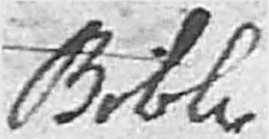 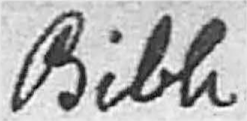 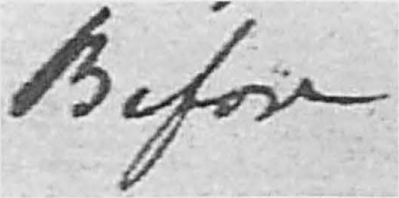
|
|
| “E” in “Eng.” | “Epicurean,” “Etruscan,” “Enquiries” (p. 1, first instances) |
|
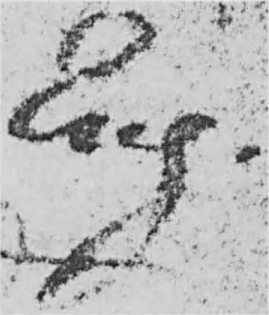
|
  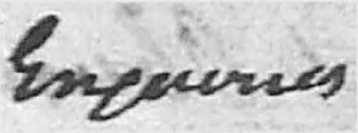
|
|
| “R” in “Rhyme” | “Reason” (p. 1) | |
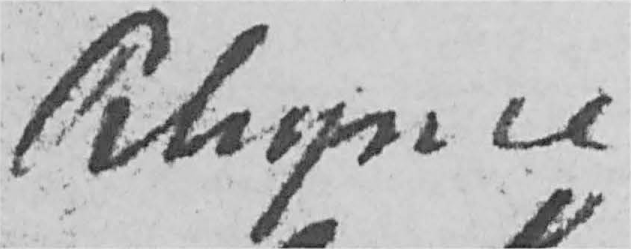
|
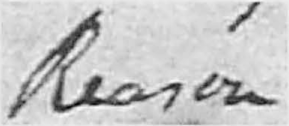
|
|
| “T” in “There” | “Tactics,” “Theology,” “Tilly” (p. 3, first instances) |
|
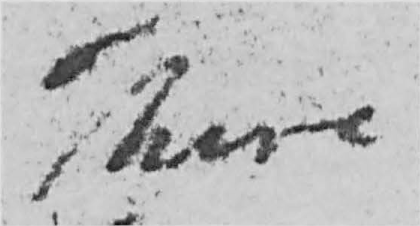
|
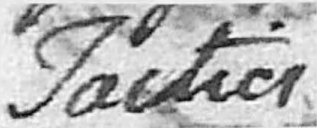  
|
Editor’s note: The words from Mystical Initiations were scanned at 500% from the Bodleian’s photograph of page vii, then enhanced with Adobe Photoshop to darken the handwriting and lighten the background, and reduced to 350% of the original size. The samples from An Island in the Moon were cropped from the William Blake Archive’s scans, then enlarged to 150% of the original. The Bodleian Libraries, University of Oxford (Arch. H e.181), and © Fitzwilliam Museum, Cambridge, respectively; Island images courtesy of the William Blake Archive.
begin page 99 | ↑ back to top| Ascenders and descenders | “d” in “good” (four instances) | “odd” (p. 1) |
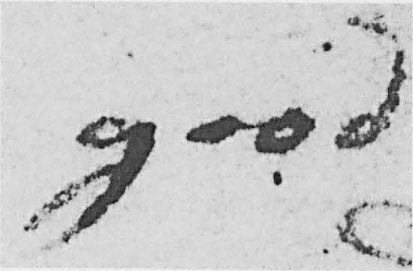  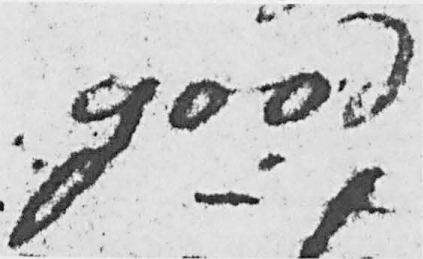 
|
|
|
| “many” | “many” (pp. 12, 13) | |
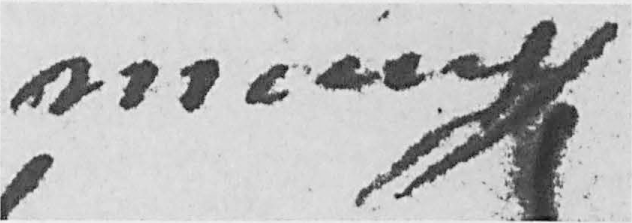
|
|
|
| “of” (two instances) | “of” (p. 1, first three instances) | |
 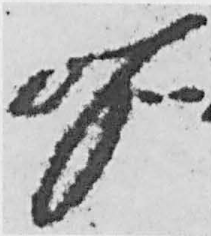
|
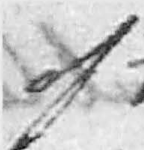 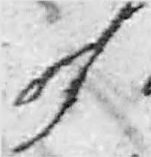 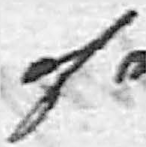
|
|
| “poet” | “purpose” (for “p”, p. 1); “Poet” (p. 6) | |
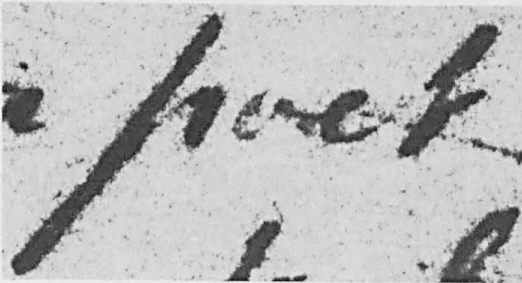
|
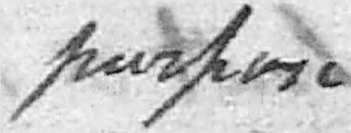 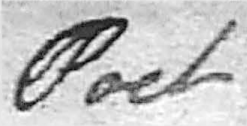
|
| “who” (two instances) | “who” (p. 1) | |
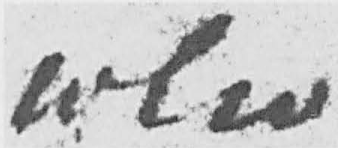 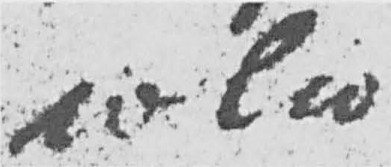
|
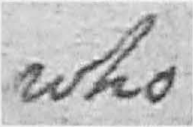
|
|
| “writing” (two instances) | “writing” (p. 17) | |
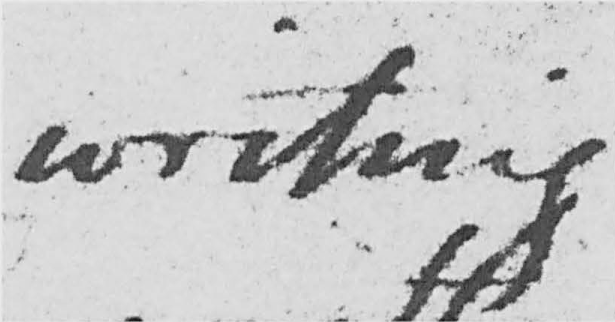 
|

|
|
| Other words | “a” | “a” (p. 1, first three instances) |
|
|
|
|
| “verse” (two instances) | “verses” (p. 9) | |
|
|
|
|
| “capability” | “abilities” (p. 17, three instances) | |

|
 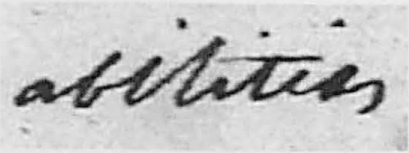 
|
V. Content of the Annotations
Blake is perhaps best known for marginalia that are fiery and indignant, such as the scornful comments in the margins of his copy of Sir Joshua Reynolds’s Discourses. However, he refers to another style of annotation in his copy of Lavater’s 1788 Aphorisms on Man: ↤ 23. E 600. See also H. J. Jackson, Marginalia: Readers Writing in Books (New Haven: Yale University Press, 2001) 82.
I hope no one will call what I have written cavilling because he may think my remarks of small consequence For I write from the warmth of my heart. & cannot resist the impulse I feel to rectify what I think false in a book I love so much. & approve so generally23The marginalia in the Bodleian copy of Mystical Initiations similarly convey a tone of friendly correction and general as- sent. Another similarity lies in the long, rough Xs that appear in the margins of pages 5 and 6, a feature known to have been used by Blake as his “mark of uneasiness.”24↤ 24. See E 583. The annotator appears to have worked attentively, frequently lifting the pen to underscore or double-underscore particular words and clauses rather than quickly running the pen under whole lines at a time. The apparent purpose of the underlining was to anthologize passages that aroused the annotator’s interest. There is no way of knowing whether the marks in pen and pencil were made by the same person, but the material to which the annotator is drawn seems consistent.
This concluding section offers some ideas about how the marginalia in Mystical Initiations, if accepted as authentic, correlate with Blake’s thought in the late 1780s. Discussion is by page number of Taylor’s book, with handwritten annotations and some of the most interesting underlinings examined first. Other comments follow in ascending page order.
P. vii (see illus. 1, 3): This annotation has a lilt like Blake’s, and its substance carries the conviction of someone who has written poetry.
Like many writers of the romantic period, Blake considered blank verse superior to rhyme. Geoffrey Hartman notes that Blake’s use of this meter in the Poetical Sketches of 1783 is ↤ 25. Beyond Formalism: Literary Essays 1958-1970 (New Haven: Yale University Press, 1970) 194.
unusual, not only for its personality (the free enjambments, the energetic beat) but also for its very presence in short poems. Not until the 1790’s will Southey, Coleridge, and Wordsworth experiment with lyrics in blank verse. With certain important exceptions, unrhymed lyrics before Blake were obvious imitations of the classics or paraphrases of the Psalms, so that Blake’s choice of verse may signify an “ancient liberty recover’d” and evoke the prophetic portions of both traditions.25
Later, in Jerusalem (1804-20), Blake would reject even blank verse as too fettered. His introductory statement “To the Public” alludes to “English Blank Verse, derived from ... Rhyming” (pl. 3, E 145), perhaps echoing the hierarchy of verse forms suggested in the annotation.
P. viii (see illus. 2): The annotator attacks translators as pedants, altering Taylor’s phrase to say that authors suffer by translation “because [it is] undertaken by men, who have devoted the greatest part of their lives to the study of words alone.”
Blake’s view of translation might be epitomized by biblical phrases that he imports into the first plate of his 1825 Illustrations of the Book of Job, “The Letter Killeth I The Spirit giveth Life” (2 Corinthians 3.6) and “It is Spiritually Discerned” (1 Corinthians 2.14). He valued translations that conveyed the spiritual more than the literal qualities of their originals, as the annotator seems to suggest here.
Taylor likely would have sympathized. His translations are notoriously loose, and he argues against the mischief of emphasizing words rather than ideas in both the preface to Mystical Initiations and, at greater length, in his introduction to Plotinus’s Concerning the Beautiful.26↤ 26. Taylor also directly references “mischief” on page 225 of Mystical Initiations: “The mischief, indeed, resulting from the study of words is almost too apparent to need any illustration.” Taylor’s diversions from literality provoked great criticism from the intellectuals of his time. However, as one of his defenders, G. R. S. Mead, asserted in the late nineteenth century, “what was true of his critics then is true of his critics today: though they may know more Greek, he knew more Plato.”27↤ 27. Thomas Taylor, Select Works of Plotinus, ed. Mead (London: George Bell & Sons, 1895) ix, quoted in Kathleen Raine and George Mills Harper, eds., Thomas Taylor the Platonist: Selected Writings (Princeton: Princeton University Press, 1969) 22-23.
P. 69: A curious correction: the annotator changes the gender of the being that “previously comprehended ... every virtue” from the “divinity ... himself” to the “divinity ... itself,” apparently suggesting that androgyny is requisite to such a divinity. If Blake is the annotator, this perhaps could be linked to the assertion on plate 11 of The Marriage of Heaven and Hell that “All deities reside in the human breast” (E 38). If the “divinity which previously comprehended ... every virtue” resides within individuals, its sex cannot be restricted.
Some of the most interesting underlinings are as follows:
P. 1: The annotator has underlined the phrase “obscurity ... affords very little matter,” which is reminiscent of Blake’s annotation to Reynolds, “Obscurity is Neither the Source of the Sublime nor of any Thing Else” (E 658).
Blake asserts in his Reynolds marginalia that “when very Young” he had rejected Edmund Burke’s Philosophical Enquiry into the Origin of Our Ideas of the Sublime and Beautiful (1757), which stresses the value of obscurity in art (E 660).
P. 70: Some of the most noticeable and continuous underlining in the book highlights Taylor’s metaphor for the “power of prayer,” culminating with
oneIt almost seems redundant to recite Blake’s famous maxim from The Marriage of Heaven and Hell, “Without Contraries is no progression” (E 34). Blake describes contraries in Jerusalem (pls. 10 and 17) as differences or oppositions that complement rather than negate, and in that sense they agree with Taylor’s use of the term here. “Pulsation” is similarly evocative. When Blake describes the “Moment” of artistic inspiration in Milton (pls. 28-29, E 126-27) he repeatedly equates it to a “pulsation of the artery.”
chord trembling from the pulsation of
another, as if it were endued with sensa-
tion from symphony. So in the universe,
there is one harmony though composed
from contraries ....
The content of this annotated passage calls to mind Coleridge’s 1795 poem, The Eolian Harp. It also has an analogy in the aforementioned reference to Taylor’s mystical experience, wherein, he indicates, his soul had “spontaneously utter[ed] musical sounds, as indications of the harmony within.”28↤ 28. See note 13, above.
Pp. 75-76: Taylor’s discussion of heliotropes, or plants that turn toward the sun, is largely translated from Proclus. Harper suggests this as the source of Blake’s “Ah! Sun-Flower” in a 1953 article later incorporated into The Neoplatonism of William Blake. Harper asserts that in Taylor’s presentation of the Plotinian doctrine of emanation, “everything in the universe participates in the first good—usually symbolized by the sun, the properties of which are everywhere apparent in the phenomenal world.”29↤ 29. Harper 119. This concept of an “alliance between ‘natural things’ and occult power” is presented in Blake’s opening verse:
Ah Sun-flower! weary of time,The second stanza extends the concept to “man, who, after all, is separated from the flower only in degree, not in kind”:30↤ 30. Harper 119, 120.
Who countest the steps of the Sun:
Seeking after that sweet golden clime
Where the travellers journey is done.
Where the Youth pined away with desire,The poem is a pure aspiration, consisting of two exhaled clauses rather than statements employing verbs in the usual sense. In Harper’s interpretation the poem likens humanity to the sunflower, anchored in the material world yet “aspir[ing] to the sun’s eternality.”31↤ 31. Harper 120.
And the pale Virgin shrouded in snow:
Arise from their graves and aspire,
Where my Sun-flower wishes to go. (E 25)
There is no known manuscript of “Ah! Sun-Flower.” If Blake was the annotator, these underlinings shed further light on the poem’s philosophical roots.
Some other observations:
P. v: These and other anti-materialistic statements marked in Mystical Initiations might be related to Blake’s 1788 tracts There is No Natural Religion and All Religions are One.
Pp. 2-3: This genealogy of theology is reminiscent of that expressed in Blake’s The Marriage of Heaven and Hell, pl. 11.
Pp. 9-10: The story of a tyrant king’s son unable to control the lyre of Orpheus would have had obvious attractions for Blake as a revolutionary poet.
Pp. 14-15: A passage underlined in brown-black ink likens the deity to “an immense and perpetually exuberant fountain; whose streams originally filled and continually replenish the world with life.” Harper links this passage to Blake in The Neoplatonism of William Blake.32↤ 32. Harper 123. If the poet was the annotator, this underlining lends support to the idea that the same person probably marked the book in brown-black and orange-brown ink. (There is also the possibility that the ink is the same, but appears darker where the pen was redipped.)
P. 19: “Soul,” here marked heavily, is underlined five times in this text. The annotator seems attracted to passages about animating energies. Could this reflect Blake’s contemplation of metempsychosis in the wake of his brother Robert’s death in 1787?
P. 26: That the annotator does not underline Greek text but marks its English translation is consistent with the practice of Blake, who is thought not to have been proficient in Greek until 1803.
P. 78: Blake uses the lotus as a symbol of evanescence in The Book of Thel (1789).33↤ 33. Harper 122.


![( viii )
[in]deed, acquainted with the learned languages,
must be conscious how much
the beauty of an ancient author generally
suffers by translation, though
because _
undertaken by men, who have devoted
the greatest part of their lives to
the study of words alone. This failure,
which has more than any thing contributed
to bring the ancients into contempt
with the unlearned, can only
be ascribed to the want of genius in
the translators: for the sentiment of
Pythagoras is peculiarly applicable to
such as these; that many carry the
Thyrsis, but few are inspired with
the spirit of the God. But this observation
is remarkably verified, in
the translators of the ancient philosophy,
whose performances are for the
most part without animation; and consequently](img/illustrations/marginalia-viii.44.3.bonus.jpg)
![the beauty of an ancient author generally
suffers by translation, though
because _
undertaken by men, who have devot[ed]](img/illustrations/marginalia-viiidetail.44.3.bonus.jpg)
